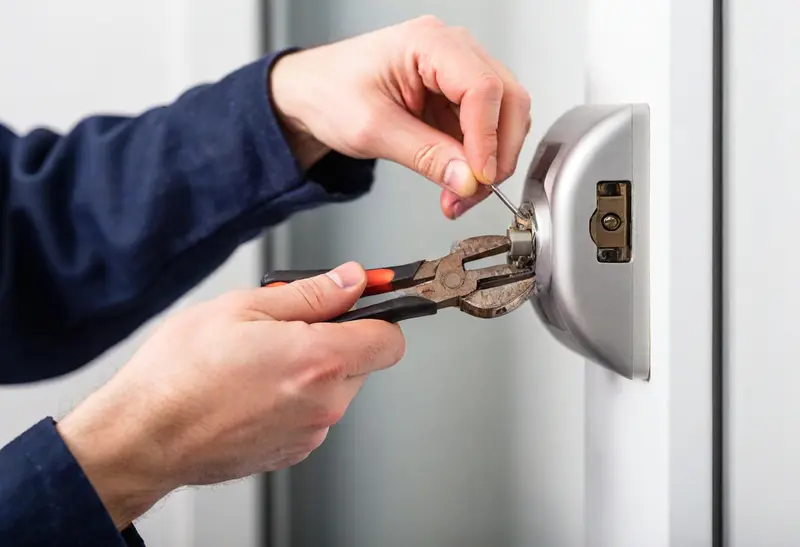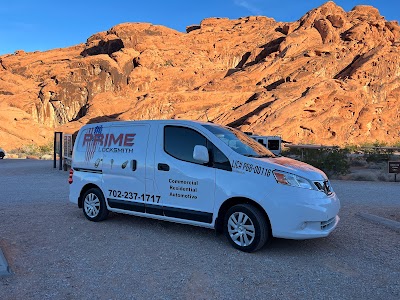Garage Door Lock Repair: Troubleshooting and Security Enhancement Tips

Introduction to Garage Door Lock Security
Your garage. Often an overlooked point of entry for potential intruders, the garage requires just as much security attention as your front door. A malfunctioning or easily compromised garage door lock can leave your tools, vehicles, and even your home vulnerable. This article dives into common garage door lock issues, DIY repair approaches, and essential security upgrades to protect your property. We’ll cover everything from understanding common lock types to addressing a stuck garage door lock and ensuring your garage is as secure as possible.
Common Types of Garage Door Locks
Understanding the type of lock you have is vital for effective troubleshooting and repair. Here’s a breakdown of common garage door lock mechanisms:
T-Handle Locks
T-handle locks are a standard feature on many garage doors. They’re relatively simple mechanisms involving a handle that you twist to engage or disengage locking bars.
- Features: These locks typically have a key cylinder in the T-handle itself. When you turn the key, it allows the handle to rotate and retract the locking bars.
- Common Issues: Common issues include a faulty garage door lock cylinder, broken handle, or bent locking bars.
Side-Mounted Deadbolts and Sliding Bolts
These locks offer an extra layer of security and are usually installed on the inside of the garage door.
- Features: Deadbolts use a key operated cylinder to operate a bolt which extends into the door frame, while sliding bolts manually lock the door.
- Common Issues: Deadbolts may become sticky or difficult to operate due to dirt or debris. Sliding bolts can become stiff over time.
DIY Solutions for Common Garage Door Lock Problems
Before calling a professional, try these DIY solutions for common garage door lock issues:
Adjusting Tracks for Proper Bolt Alignment
If your locking bars don’t align correctly with the holes in the door tracks, the door won’t lock.
- Troubleshooting: Visually inspect the tracks. Are they bent, misaligned, or obstructed?
- DIY Fix: Use a rubber mallet to gently straighten any bent sections of the track. Loosen the track mounting brackets and adjust the track position. Ensure the locking bars smoothly enter the holes when the handle is turned.
Lubricating the Locking Mechanism
A stiff garage door lock often simply needs lubrication.
- Troubleshooting: Observe if the handle is difficult to turn or if the locking bars move sluggishly.
- DIY Fix: Use a silicone-based lubricant specifically designed for locks. Avoid using oil-based lubricants, as they can attract dirt and grime. Spray the lubricant into the key cylinder and onto the locking bars. Work the handle back and forth to distribute the lubricant.
Replacing a T-Handle Lock
Replacing a T-handle lock is a relatively straightforward process.
- Tools Needed: Screwdriver, pliers (optional), replacement T-handle lock.
- Steps:
- Remove the old T-handle by unscrewing the mounting screws from the inside of the door.
- Detach the locking bars from the old handle.
- Insert the new T-handle into the hole.
- Attach the locking bars to the new handle, ensuring they are properly aligned.
- Secure the new handle with the mounting screws.

Addressing a Jammed Garage Door Lock
A jammed garage door lock can be frustrating. It may be caused by a foreign object, corrosion, or a broken component.
- Troubleshooting: Try jiggling the key or handle while applying gentle pressure. Avoid forcing the mechanism.
- DIY Fix: Apply a penetrating lubricant to the keyhole and locking bars. Let it sit for a few minutes, then try working the handle again. If this doesn’t work, carefully inspect the lock for any visible obstructions or damage. If possible, remove the lock and disassemble it to clean and inspect the internal components.
Enhancing Garage Door Security
Beyond basic repairs, consider these upgrades to bolster your garage’s security:
Installing Additional Locks
Adding a second lock, such as a deadbolt, significantly increases security. Install a high-quality deadbolt on the inside of the garage door, positioned away from the primary T-handle lock. This makes it much more difficult for intruders to force entry.
Reinforcing the Garage Door
The garage door itself is a potential weak point. Consider adding reinforcement plates to the door panels to make them more resistant to forced entry.
Upgrading to a Smart Garage Door Opener
Smart garage door openers offer enhanced security features, such as remote monitoring and control, activity logs, and alerts when the door is opened or closed.
Regularly Inspecting and Maintaining Your Garage Door
Regularly inspecting and maintaining your garage door is crucial for ensuring its security. Check the condition of the door panels, tracks, rollers, and locking mechanisms. Lubricate moving parts regularly and address any repairs promptly.
The Importance of Professional Locksmith Services
While DIY repairs can address many garage door lock issues, complex problems or situations requiring specialized tools are best left to a qualified professional locksmith service. A locksmith can accurately diagnose the problem, provide expert repairs, and recommend security upgrades to protect your property. Professionals have experience working on a variety of locks and access to higher quality parts, ensuring a lasting solution.
Securing Your Garage: Closing Thoughts
Your garage’s security is an essential part of your overall home security plan. Regular maintenance of your garage door security coupled with proactive enhancements create a strong defense against potential intruders. Ensure your family and possessions are safe with a reliable and secure garage door locking system. We offer repair, replacement, and installation of dependable garage locks to secure your space.
Important Disclaimer: This article provides general guidance on garage door lock repair and security enhancement. While the information is intended to be helpful, it is not a substitute for professional advice. Always exercise caution when performing DIY repairs, and consult a qualified locksmith for complex issues or when unsure about any procedure. The reader assumes full responsibility for any actions taken based on the information provided in this article.
FAQs: Garage Door Lock Repair and Security Tips
-
What are the most common types of garage door locks?
The most common types are T-handle locks (often with a key cylinder) and side-mounted deadbolts or sliding bolts, which offer extra security.
-
My garage door lock is stuck. What can I do?
Try jiggling the key or handle while applying gentle pressure. Apply a penetrating lubricant to the keyhole and locking bars. Let it sit for a few minutes before trying again. If that fails, inspect for visible obstructions or damage.
-
The handle on my garage door lock is stiff. What could be the problem?
A stiff garage door lock usually just needs lubrication. Use a silicone-based lubricant designed for locks. Avoid oil-based lubricants, as they attract dirt. Spray it into the key cylinder and onto the locking bars. Work the handle back and forth.
-
How do I replace a T-handle lock on my garage door?
First, remove the old T-handle by unscrewing the mounting screws from inside the door. Detach the locking bars. Insert the new T-handle, attach the locking bars ensuring alignment, and secure with the screws.
-
The locking bars on my garage door don't align properly. How can I fix this?
Inspect the tracks for bends, misalignment, or obstructions. Use a rubber mallet to gently straighten bent tracks. Loosen the track mounting brackets to adjust the position. Ensure the locking bars smoothly enter the holes.
-
What are some ways to enhance my garage door security?
Consider installing additional locks (like a deadbolt), reinforcing the garage door panels, upgrading to a smart garage door opener, and regularly inspecting and maintaining your garage door system.
-
Is it worth it to install a deadbolt on my garage door?
Yes, installing a high-quality deadbolt on the inside of your garage door provides an extra layer of security and makes it significantly more difficult for intruders to force entry.
-
When should I call a locksmith for garage door lock issues?
Complex problems, situations requiring specialized tools, or if you're unsure about performing DIY repairs are best left to a locksmith. They can accurately diagnose and repair the problem, and recommend security upgrades.
-
What kind of lubricant should I use for my garage door lock?
Use a silicone-based lubricant specifically designed for locks. Avoid oil-based lubricants, as they can attract dirt and grime.
-
How often should I inspect and maintain my garage door for security?
Regular inspections and maintenance are crucial. Check the door panels, tracks, rollers, and locking mechanisms frequently. Lubricate moving parts regularly and address any repairs promptly.






